
Coconut Oil Soap Making Recipe
So I wondered if there was a way to make a 100% coconut oil soap that did not strip the skin. After a bit of research and several test batches, I found the trick.
Print
Pin
Yield (adjustable): 6 bars
Ingredients:
- 450 grams (15.87 oz) Refined Coconut Oil solid
- 65.5 grams (2.31 oz) Soapmaking Lye
- 131 grams (4.62 oz) Distilled Water
- 7 grams (0.25 oz) Lavender Essential Oil optional
- 7 grams (0.25 oz) Peppermint Essential Oil optional
Equipment:
- Lazer Temperature Gun or jam-style thermometer
Instructions:
- Make sure you are making the soap in a well-ventilated area. Put on your gloves and eye protection, mask, apron, and long rubber glovesIf you are incorporating essential oils, weigh them into a small glass container and set it aside for later use.
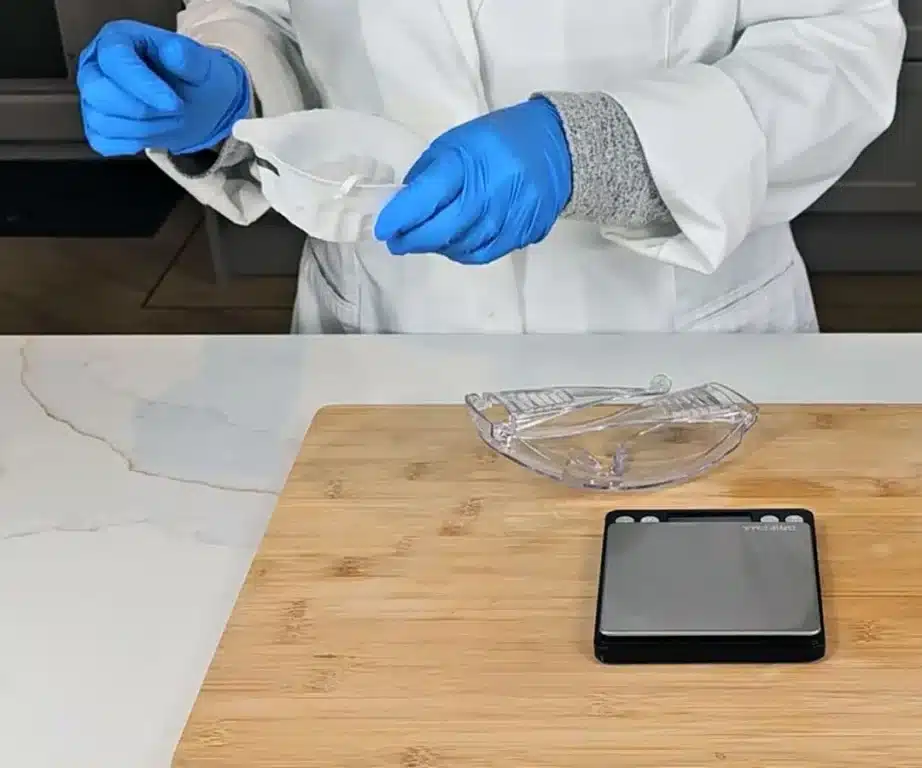
- Weigh the coconut oil into a good-sized heatproof container. Melt in a microwave, using 30-second bursts. Or in a stainless steel saucepan on a low heat.450 grams Refined Coconut Oil
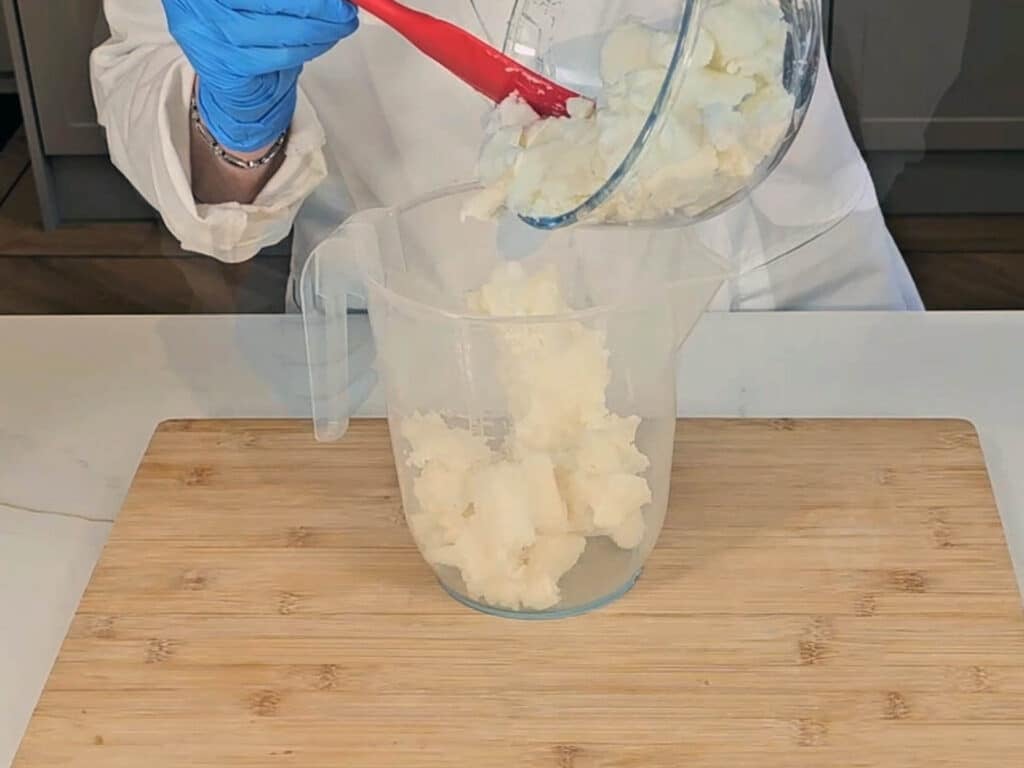
- While the coconut oil melts, weigh the distilled water into a clean container. Never use a glass container as this will be holding the lye water. Lye can weaken glass so it can easily break. In a separate container, weigh your sodium hydroxide/lye crystals.131 grams Distilled Water
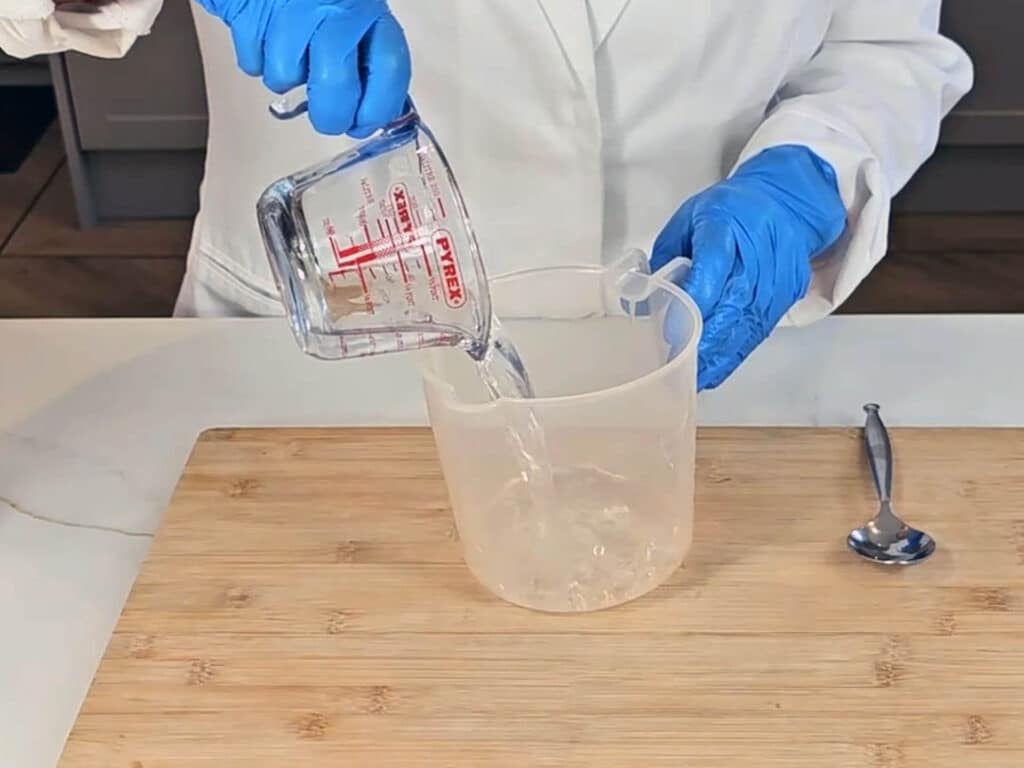
- When you’re ready, carefully pour your lye crystals into the water, do not pour the water into the lye as this can create a violent reaction.When the lye is in the water, start stirring it. Although you are wearing a mask, we still recommend turning your head and leaning away while stirring, so you do not breathe any of the fumes. As the water and lye mix this will result in a chemical reaction, and the lye water will increase in temperature and release toxic fumes.65.5 grams Soapmaking Lye
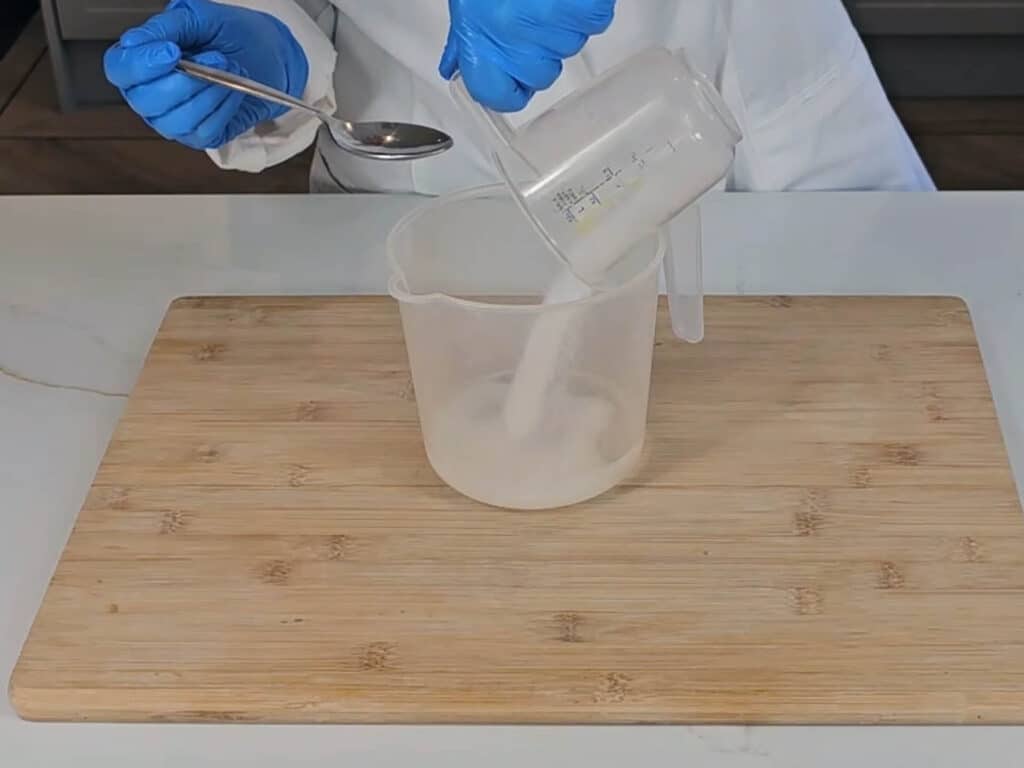
- Stir until the lye crystals have dissolved and the water looks fairly clear. Now place to one side, somewhere well-ventilated but safe so that it will not be knocked over. Allow to cool.Once your coconut oil is melted, also set aside to cool.
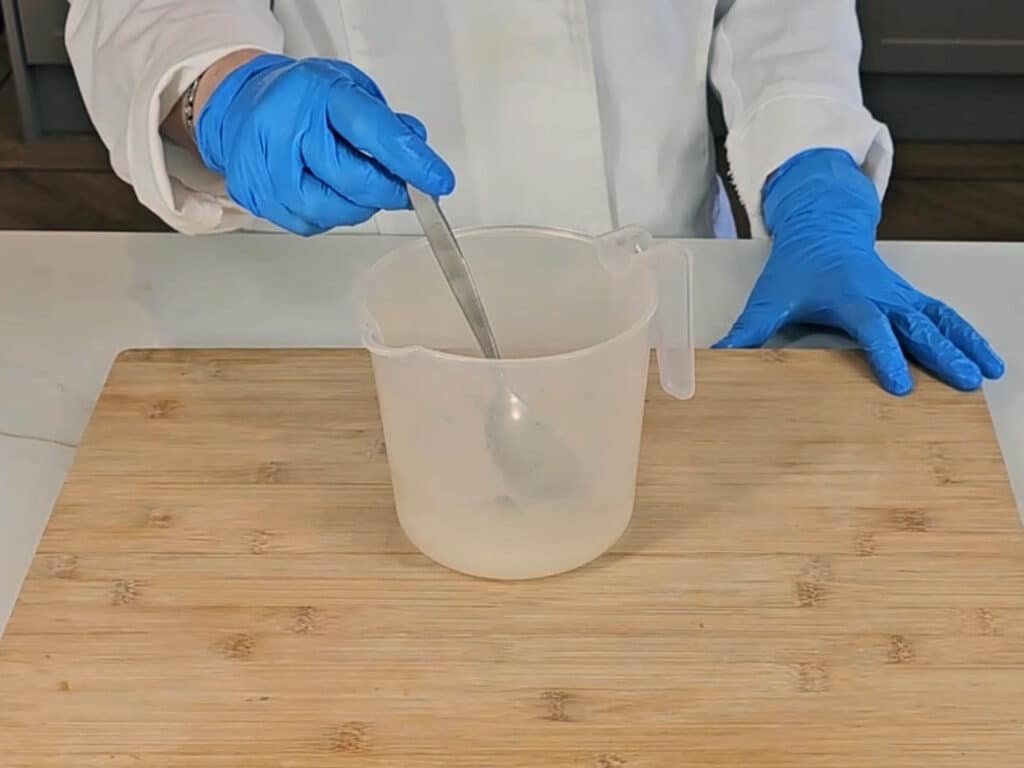
- Check the temperature of the oils and the lye water. You can do this with a temperature laser gun or a jam thermometer. We want them both to fall between 115-80F (46-27C). If they are still too hot leave them to cool for a while longer. They do not need to be the same temperature, for example, the lye could be 90f and oils 100f, but it is best to keep them within 10 degrees of each other.
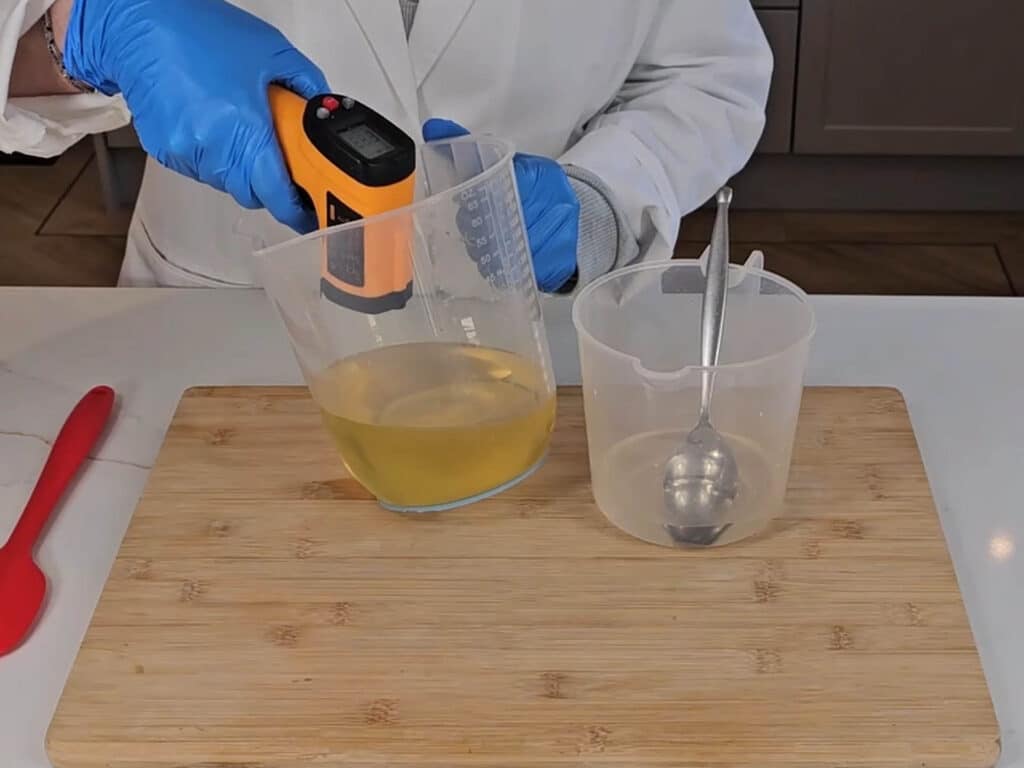
- Once you’re satisfied they’re balanced, combine by pouring your lye solution into your oils.Before turning on the stick blender to mix the oils and lye, gently tap the stick blender against the bottom of your container. Continue tapping until all the air bubbles have been released.
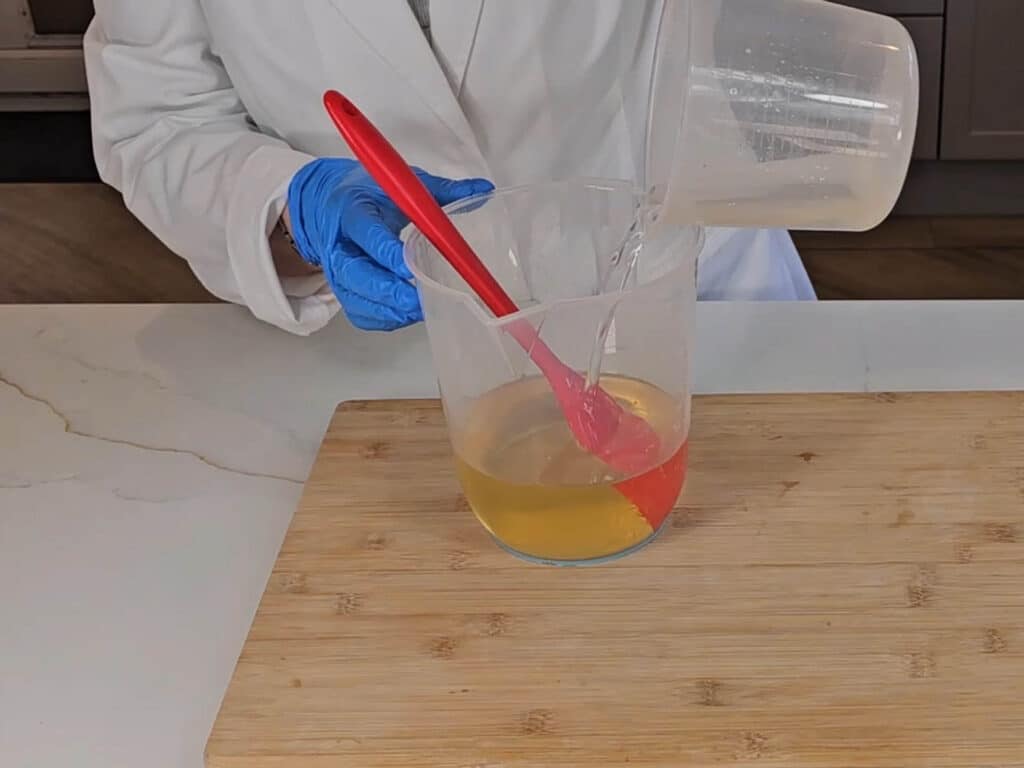
- Turn on the stick blender and blend until the oils are fully emulsified into the lye solution. Then switch off the blender and check for trace. This is when you can drizzle a small amount of soap batter on top and it leaves a visible trail or 'trace' on the surface.Now that we’re at trace, this would be a great time to add any essential oils, if you’re using them. I always recommend getting the mold ready before adding the essential oils, as they can sometimes thicken the soap batter, meaning you have to work quickly to get it into the mold.7 grams Lavender Essential Oil, 7 grams Peppermint Essential Oil
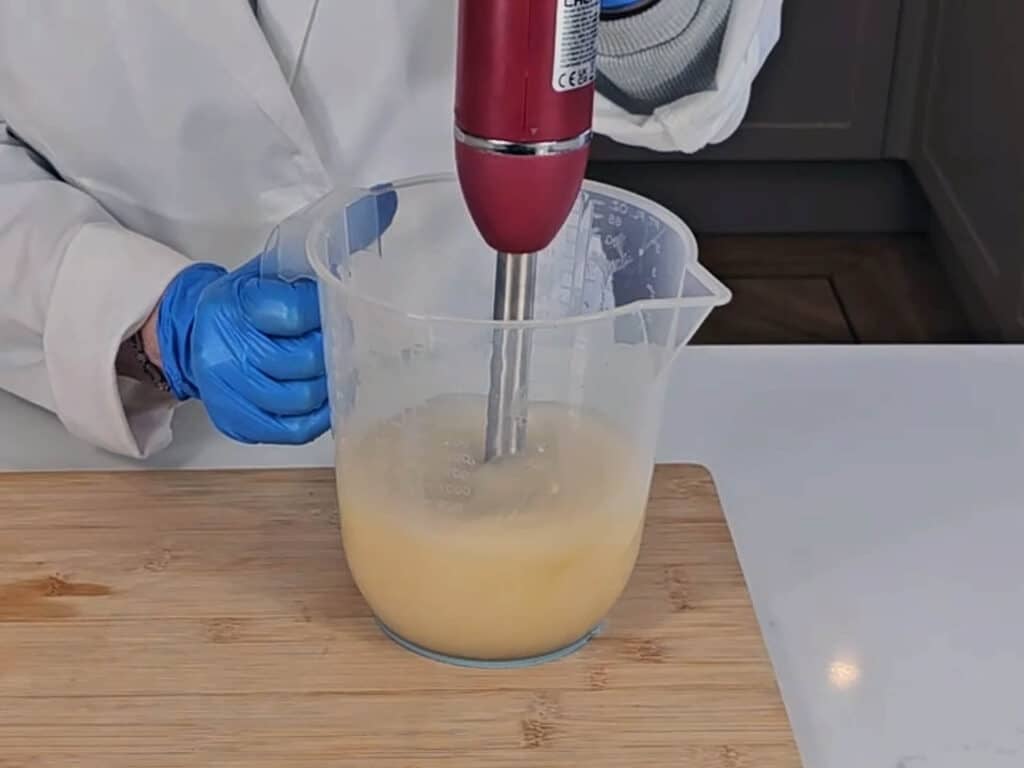
- Now it’s time to get it into the mold. Pour or spoon the batter into your molds. Give them a couple of light taps down to even the soap batter out, and use a silicon spatula to level them out if needed.We now need to leave them to saponify for 24 hours before we can remove them from the molds. I like to keep it well insulated during this period, so the gel phase is efficient. I do this by placing a cardboard box over the mold, then placing a towel over the box.
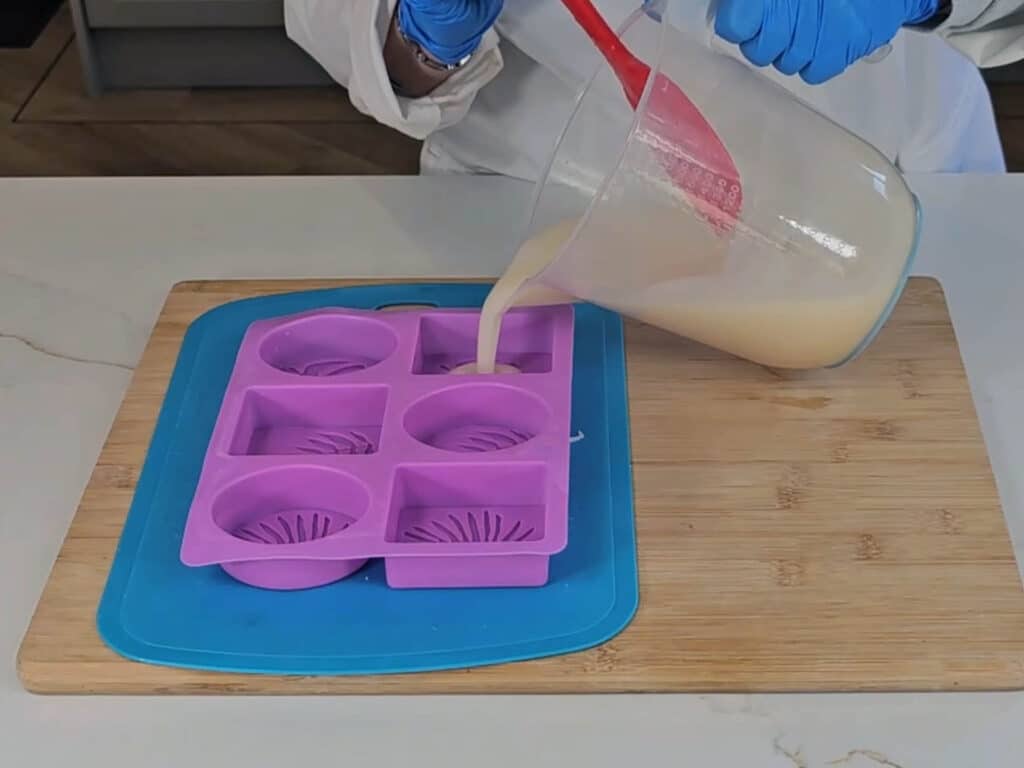
- Once our soap has fully sapped, and the sides of the molds come away easily from the soap, it’s okay to remove it from the mold.
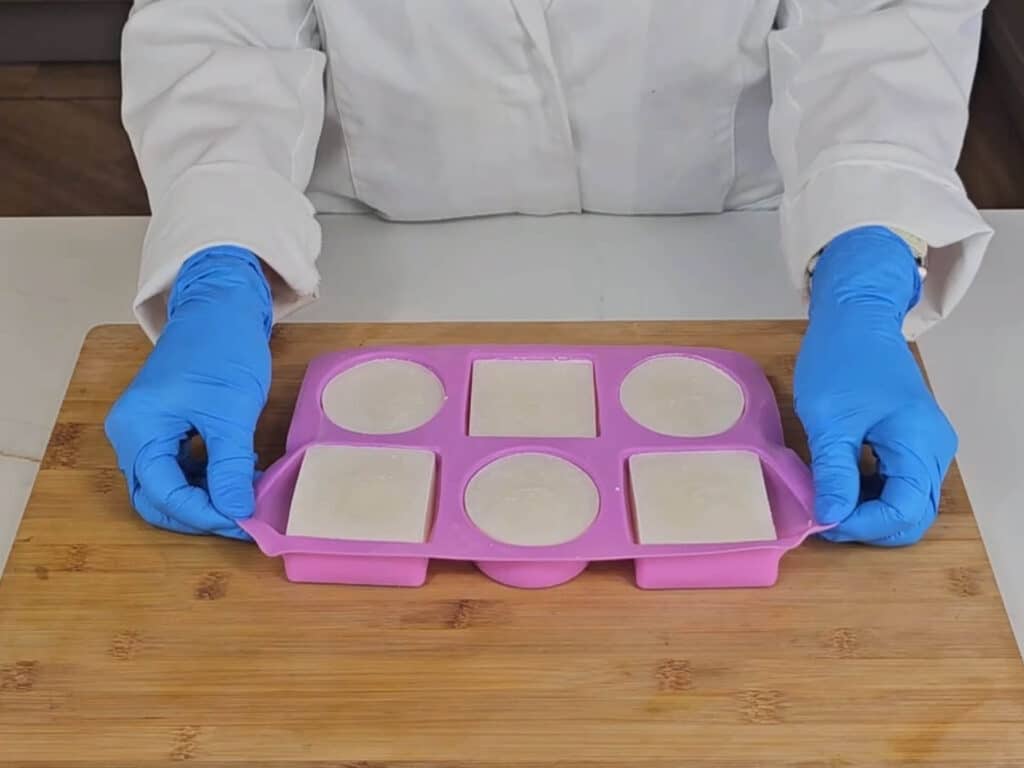
- The soaps will need to cure for 6 weeks before using. Curing the soap allows excess water to evaporate, resulting in a harder, longer-lasting bar. This also results in a more gentle bar and a better lather.To cure the soap bars, place them upright in a cool, dry area, and turn the bars occasionally to ensure even drying.

Tried this projectMention @Savvyhomemade or tag #savvyhomemade!